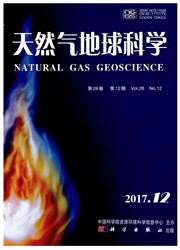

 中文摘要:
中文摘要:
四川盆地川西坳陷在中侏罗世沙溪庙组沉积期,是一个典型的前陆盆地,前缘坳陷位于大巴山山前。这一时期,气候炎热、干旱,受山前构造抬升的影响,大量碎屑物质从周围高耸山脉汇入盆地,发育了一套河流一下切谷沉积体系。在前陆盆地,不同时期、不同构造位置的河流沉积体系受不同程度的自旋回和异旋回等因素的控制,前人对这方面研究的较少。综合利用三维地震数据、测录井、岩心及野外露头资料,阐明了沙溪庙组层序结构与沉积充填特征,重点讨论了不同因素对前陆盆地河流相层序发育的控制作用,建立了沉积演化模式。结果表明:①沙溪庙组自下而上可以划分2个三级层序,每个层序内部均发育典型的沉积旋回,即下切谷河流-三角洲,其中下切谷的厚度一般为20~30m,宽度为6~13kin;②在低频层序发育时期,构造、气候等异旋回过程控制着河流沉积体系的进积与退积;在高频层序发育时期,河流的垂向加积和侧向加积等自旋回过程决定了河流沉积体系的几何形态变化,即从上游到下游,由于河流能量逐渐减弱,河道的侧向加积作用逐渐减弱,河道或河谷的宽度逐渐减小;③建立了前陆盆地河流相沉积演化模式,该模式对发育在前陆盆地的河流沉积体系具有一定的借鉴意义。
 英文摘要:
英文摘要:
During the depositional period of the Middle Jurassic Shaximiao Formation,the Western Sichuan Depression was a typical foreland basin with its foredeep in the Daba Mountain front.Controlled by tectonic uplift,large amounts of terrestrial debris were transported from the mountains.A set of fluvio-incised val- ley successions was deposited under semi-arid to arid climatic conditions.Autogenic and allogenic controls on the fluvial sequence developed at different times and positions have rarely been described in detail, which is noteworthy here.In this study, by integrating 3D seismic data, loggings, cores and outcrops, we investiga- ted the sequence architecture and its sedimentary infill of the Shaximiao Formation, analyzed the different controls on fluvial successions developed in the foreland basin, and provided a sedimentary evolutional mod- el.Our results show that: ① the Shaximiao Formation can be divided into two three-order sequences, and each one is recorded by a typical sedimentary cycle of incised valley-fluvial channel-delta, with incised val- leys of 20-30m thick and 6-13km wide;② during the phase of low frequency cycles, allogenic processes, such as tectonic movements and climatic changes,primarily controlled the progradation and regradation of the fluvial system;during the phase of high frequency cycles, autogenic processes, such as vertical and later- al accretion,mainly controlled the planform geometry of the coeval fluvial system, from the upstream to the downstream direction,the downstream decreases in the stream power appears to be responsible for the decreasing trend in the incised valley dimensions;and ③ a sedimentary model is provided to be used as a reference for the interpretation of similar fluvial systems in foreland basins.
 同期刊论文项目
同期刊论文项目
 同项目期刊论文
同项目期刊论文
 期刊信息
期刊信息
